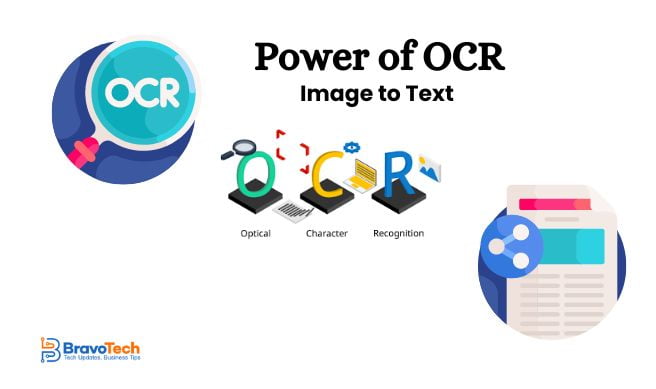Technology Solutions to Navigate Remote Work Challenges

Remote work! There’s no getting away from those two words if you run a business in 2024. In the wake of recent developments in the labour market, the corresponding environment of the workplace has experienced a dramatic change, fully on the shoulders of remote work. Consequently, this has been fostered by a set of factors that includes both technology and the global events that have occurred recently such as the COVID-19 pandemic.
Remote work gives the encouragement and opportunity for the implementation of flexible schedules, decreases the need for time to commute, and makes it possible to reach the best talents from around the world – the positive effects of remote work career are incredible. Actually, subtracting is not directional; you just multiply with -1 on the other side in both cases. Organization operating in such approach will probably be getting more effective results covering labor during periods of the day when otherwise there would be fewer employees working for them, while keeping their wage electricity low. For instance, worker’s love the advantage of being autonomous and independent of creating their own work culture.
However, remote work is not without its challenges!
There are various hurdles your company has to overcome. These hurdles include maintaining effective communication, ensuring data security, and fostering a cohesive company culture within a virtual environment. Not sure how to navigate these challenges effectively? This guide is here to help. Below are ways you can utilize technology solutions to enhance your remote work strategy.
Communication and Collaboration Tools
Effective communication and collaboration tools are the foundation of any remote work approach. They are a necessity to hold the team together, a glue that preserves productivity and connectivity across distances. As for tools that stand out in letting teams interact and manage projects, big hitters include:
- Slack
- Zoom
- Microsoft Teams
- Google Meet
Each tool addresses specific aspects of remote collaboration. Slack and Microsoft Teams, for instance, facilitate instant messaging and quick check-ins. This replicates the spontaneous conversations that occur in physical offices. However, Zoom and Google Meet mimic the experience of face-to-face meetings, which are vital for detailed discussions and maintaining personal connections.
Along with a combination of the above communication tools, platforms like Asana and Trello can be instrumental in terms of project management. They supply an easy-to-follow overview of projects, allowing your employees to track progress, assign tasks, set deadlines, and so on. Asana stands out with task and workflow management, while Trello’s card-based system is ideal for organizing tasks and ideas.
Effectiveness levels are taken up another notch with the integration capabilities of these tools. Many of them can be interconnected, meaning data can flow seamlessly from one platform to another. As an example, you can integrate Slack with Trello, enabling updates in the latter to be automatically sent as notifications in a Slack channel. This integration further assists with streamlining workflow and boosting efficiency.
Read Also: How Work Management Software Simplifies Strategic Planning?
Data Accessibility and Security
With a remote work environment, your employees are often spread out across various locations. This sees the importance of data accessibility and security ramp up considerably. Cloud storage solutions – like Google Drive and Dropbox – have become indispensable, offering easy, scalable access to files and documents. Another positive is the ability to share and work on documents in real-time. This ensures everyone can access the latest version of a file – regardless of location.
However, while cloud storage still brings convenience and other benefits to the table, this technology does result in significant data security challenges. Remote work environments are particularly susceptible to security risks. With employees accessing company data through various networks – including personal ones – these are often less secure than your company’s office network. This is why, to safeguard data against unauthorized access and cyberthreats, you must use measures like two-factor authentication and encryption.
In this context, schema migration also emerges as a critical process. It involves updating and modifying the database schema to enhance functionality, performance, and security. This is key for optimizing databases for cloud-based platforms, ensuring data is both accessible and secure. Additionally, schema migration helps maintain data integrity. As a result, and as databases evolve or move to new platforms, they remain consistent and reliable.

Integration with Existing Systems
Integrating applicable tools with existing systems is a significant challenge that can make businesses hesitant to adopt remote work fully. Adopting tools for communication, data sharing, project management, etc., must work harmoniously with your legacy systems. Not only that, but the integration process needs to be smooth to avoid business disruptions.
The challenge crops up because new tools often operate on different platforms or technologies compared to older systems. This disparity can lead to compatibility issues, where data might not seamlessly transfer between systems, or certain functionalities may be limited.
A successful integration strategy involves careful planning. This can require custom solutions like API development or middleware to bridge gaps between new and existing technologies. Admittedly, it’s a lot of work, yet it is key for remote work success. A well-integrated system maintains continuity in business processes, minimizes learning curves, and enhances the user experience.
Maintain Productivity and Manage Workloads
When opting for a remote work structure, one more nuanced challenge is ensuring employees maintain their productivity levels. It can be difficult to track their progress and ensure accountability – at least if you’re not using the right tools.
These tools include:
- Time tracking software: These tools, like Toggl, help individuals and teams track how much time is spent on various tasks. They provide insights into productivity and help with efficient time management.
- Workflow automation tools: They automate repetitive tasks by creating workflows that connect different apps and services, thus saving time and reducing the likelihood of human error.
- Task management software: By allowing teams to organize, prioritize, and track the progress of their tasks, it ensures everyone is aligned and aware of deadlines and responsibilities.
- Performance management systems: These tools facilitate regular check-ins and feedback – vital for maintaining employee engagement and productivity.
Ending Note
The importance of these tools in a remote setting cannot be overstated. They offer structure and transparency – aspects that are essential in a workplace where direct oversight is limited. By leveraging the right technology solutions, your company can guarantee your remote employees are productive and working in a way that aligns with your goals and timelines.






